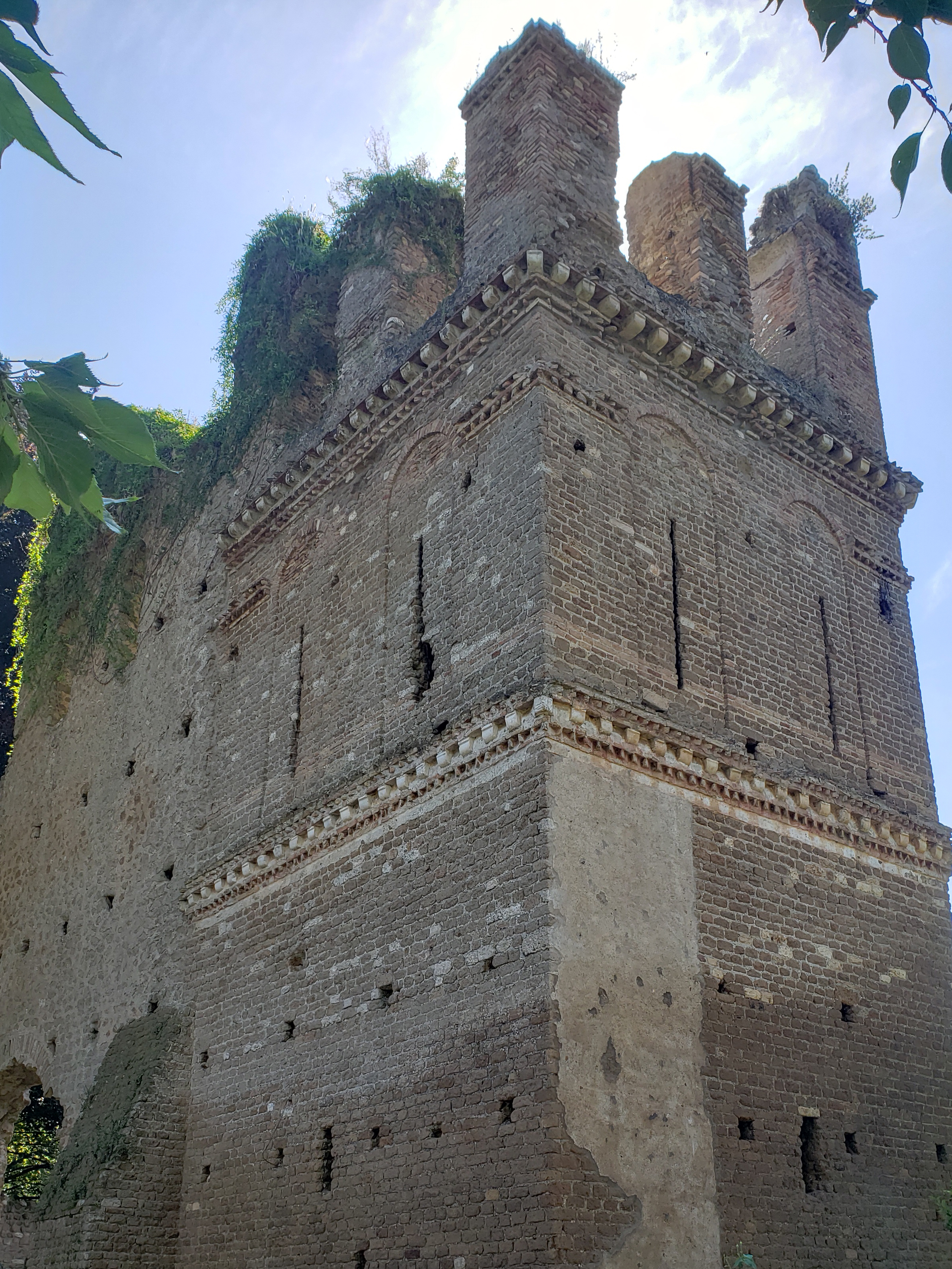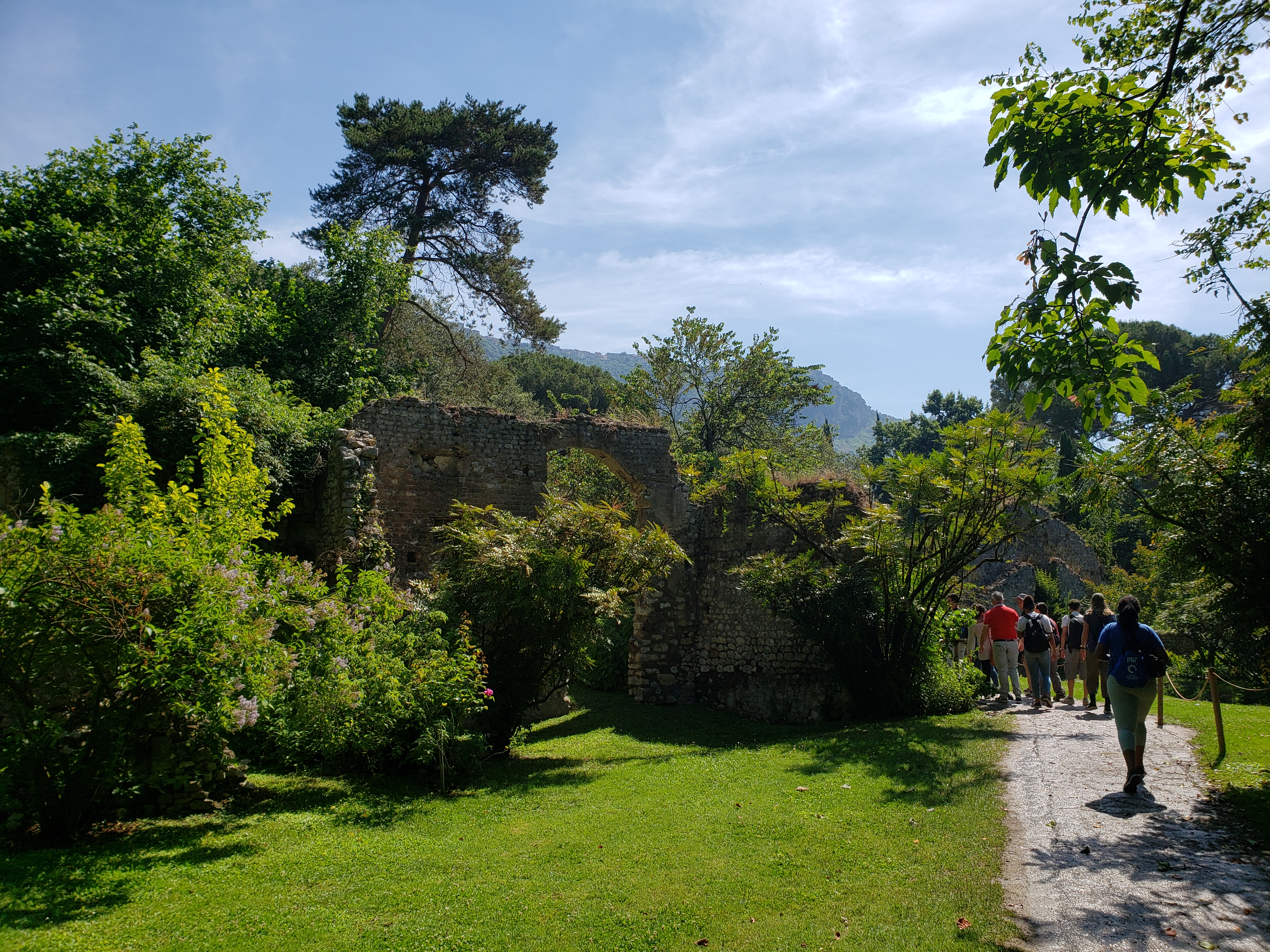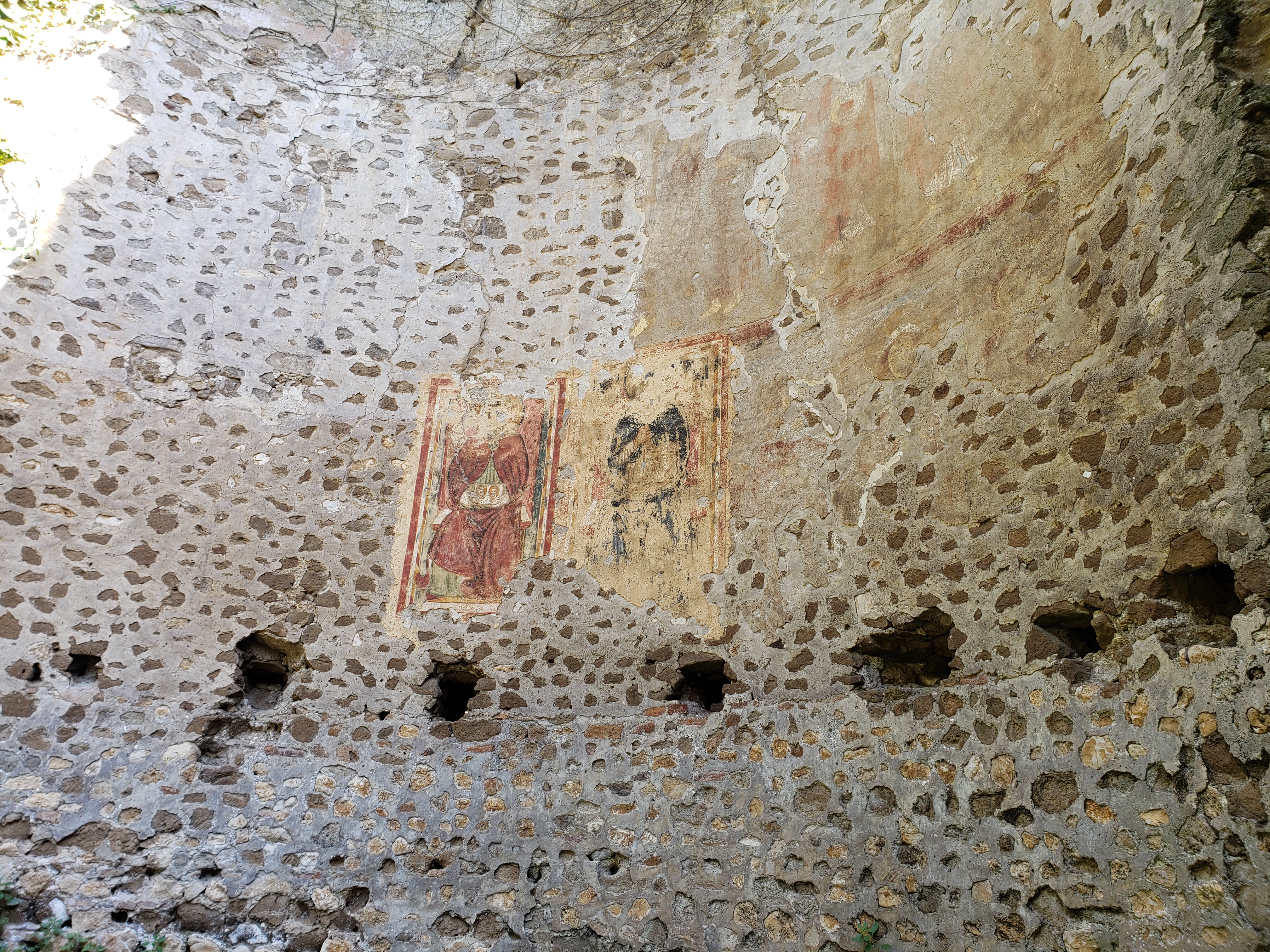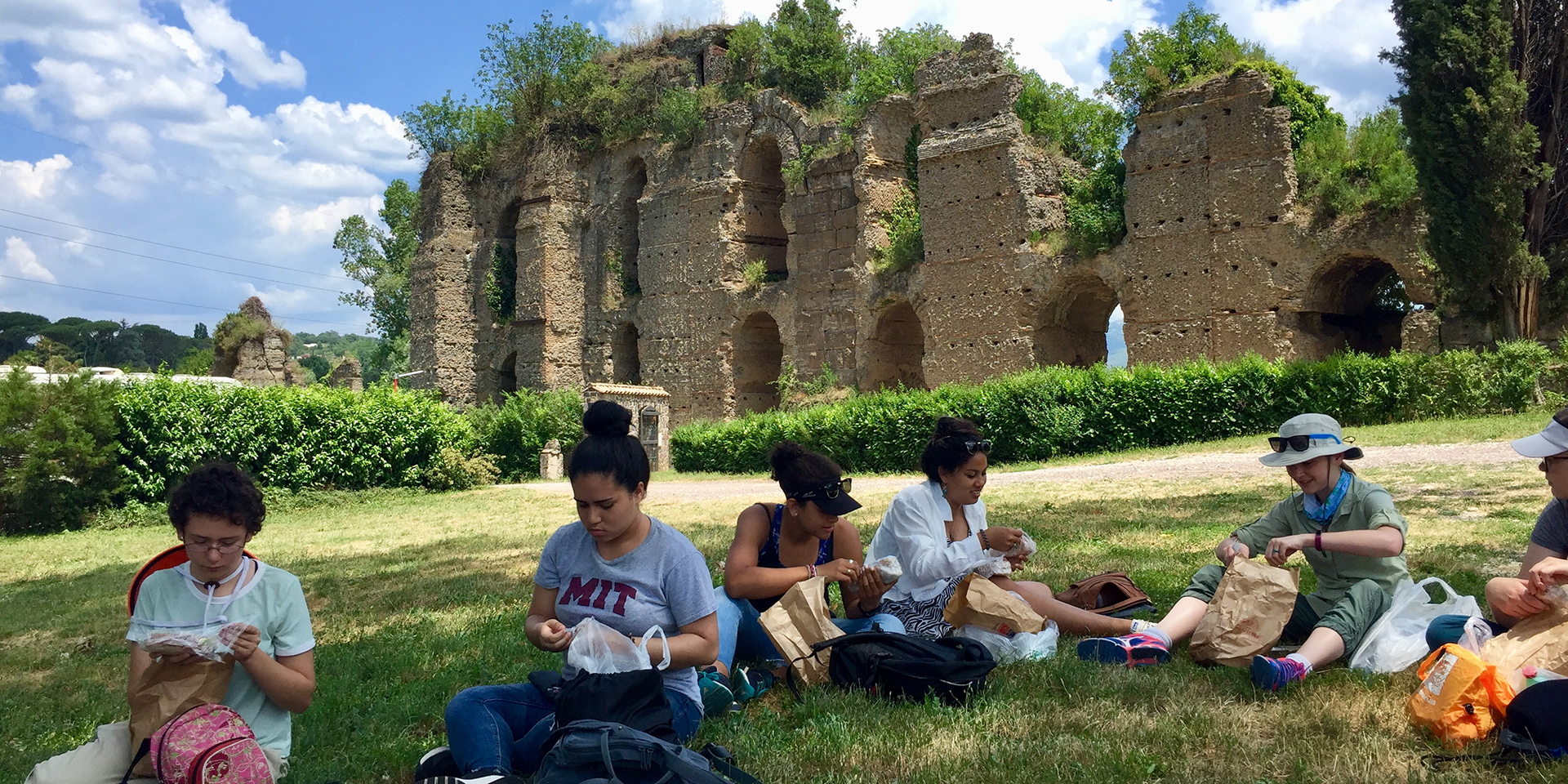ONE-MA3: A Medieval Eden

By Marcin Hajduczek ’22
“Hurry, get across quickly before the grounds keepers notice,” Professor Masic joked, ushering us across the rope that closed off the exhibit from most visitors. While other tourists watched us with knit eyebrows and confused glances, we were being given full access to the Ninfa Gardens in Latina thanks to its president Tommaso Agnoni. Treading on the blurry line between amazed tourists and inspired archeologists, crossing the ‘yellow tape’ symbolized a level of trust that Tommaso had in our abilities to help him preserve the Garden’s beauty. One of the centerpieces of the sprawling grounds, the ruined church that we stepped into was a prime example of the vision behind Ninfa’s creation: to save a medieval city from becoming obsolete, its veil of overgrown vines and weeds had been replaced with exotic flora, attracting visitors who marvel at the intertwined cobblestones and flowers.

Castle at the Gardens of Ninfa
“Look at this,” Professor Masic said more seriously, pointing to a sprinkler spraying water on a church pillar. “This place is going to crumble in a few years without us.” Our all-access pass to Ninfa came with the price tag of MIT’s technological prowess and Area 3’s conservation expertise. “Okay, you know what your job here is,” Professor Masic reminded us. “Take a lot of photos of the altarpiece containing the fresco, thermal scan it, and use the XRF gun to find the composition of its pigments.” We needed the multitude of photos to create a 3D model of the church altar through a process known as photogrammetry. But the sun was problematic in more important ways than just the 92 degree heat; drastic differences in lighting between one photo and another could confuse the software used to analyze the photos and distort the model it generated. We knew that we had to take pictures systematically and quickly, before the lighting conditions changed with the moving sun.

The fresh springs weaving in and around of the gardens
Adjusting my baseball cap firmly over my head, I could practically feel the sunblock evaporating from my arms as I took my phone out of my pocket to take photos. Even with its brightness set to maximum, my phone’s screen struggled to compete with the glare of the sun. The best way to take the photos, I had learned earlier in the day, was just to take so many that a few blurry ones could be deleted later and replaced by a sea of pictures. Although tedious, the process was admitedly very useful; combined with the thermal scan, having a 3D model would allow us to figure out where the wall and the fresco might have small cracks. Sometimes invisible to the naked eye, these could be enough for the sprinklers Professor Masic hated to spread water into the structure and destroy the delicate 800 year old artwork. Stepping back into the shoes of an amazed tourist on a personal level, taking hundreds of photos let me view the structure more accurately than most Ninfa visitors, and to memorialize the experience along the way.

The gardens growing around the ruins
Looking around, I noticed that one bell tower was in pristine condition, while along the opposite wall there was nothing more than a pile of rubble where presumably an identical tower once stood. The altarpiece we were analyzing with photogrammetry likewise had two vivid frescoes, and faint outlines of many more that hinted at long-gone ornate religious artwork. “Why has one tower survived medieval sieges while its mirror image crumbled like a sand castle?”I wondered out loud. “Why does one fresco capture a 1000 year old artistic vision, while an adjacent painting is hardly worth 1000 words?”Professor Masic offered a reluctant smile, but his lost gaze and knit eyebrows told a different story. “Perhaps most importantly, how long until the cultural heritage that’s left is gone forever if we don’t preserve it?”

Ancient frescoes on the wall of a ruin
Share on Bluesky


